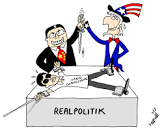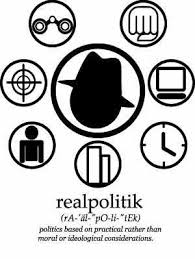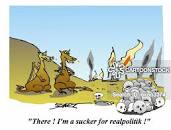“America has no permanent friends or enemies, only interests”― Henry Kissinger
The February 2020 POTUS Trump’s much hyped but low on substance visit to India underscored one cardinal point that USA-India relations were predominantly based on realpolitik than lofty principles that both countries otherwise claim to have stood for as well camouflaged tolerant democracies. The disgusting commonalities between Trump and Modi like Islamophobia, anti-Muslim, white supremacist, far right intolerant Hindu nationalism, anti-immigration laws, make America great again and made in India slogans appeared to be leading premise for Trump and Modi’s bear hugs rather than open democratic norms and free interactive economy. Trump’s visit coincided with the most brutal communal riots in Delhi since 1950, clashes that killed dozens of Muslims while state police remained an onlooker, which led to the burning and destruction of Muslim homes, mosques, and businesses. According to Alyssa Ayres, “Trump’s muted response to the riots underscored the extent to which realist considerations now govern the U.S.-Indian relationship. A bipartisan U.S. foreign policy consensus has elevated the rise of China to an organising principle of U.S. grand strategy. And realists on both sides of the political aisle argue that Washington’s and New Delhi’s interests align in seeking a balance of power in the Indo-Pacific region, with India’s heft and capabilities necessary for reaching that goal”. It is “up to India,” the leader of the free world Trump said dismissively, when asked about the religious violence in India during his visit. On the contrary, when U.S. President Barack Obama visited India in January 2015, he used part of his public address in New Delhi to caution that India “will succeed as long as it is not splintered along the lines of religious faith . . . and is unified as one nation.” But as competition with China yokes Washington and New Delhi closer together, the two countries’ shared emphasis on democratic values is waning. A turn away from upholding those values will surely make it harder to position India as a bulwark against rising China.
Since his re-election in 2019, Modi government has seen serious downward trends in economy that he has been trying in vain to cover up by political gimmicks and unduly heightened escalation with Pakistan along the line of control while keeping Indian occupied Kashmir in unabated total lock-down for over six months now. On the contrary, quite ironically, he has made good on some of his Bharatiya Janata Party’s most ideological promises made to its Hindu nationalist base. In August, his government ended the nominal autonomy of the Muslim-majority in occupied state of Jammu and Kashmir by revoking article 370 and 35 A of Indian constitution. Again he followed it up with the idea of a national citizenship amendment act (CAA) that could leave millions of Muslims stateless that resulted in nationwide peaceful protests that in turn provoked a backlash from the law’s supporters and in Delhi, tensions culminated in the recent riots. However, it was a little satisfying to note that turbulent events in India since Modi unleashed his brutal policies have troubled U.S. lawmakers. Statements from the chair of the House Foreign Affairs Committee and the ranking member of the Senate Foreign Relations Committee have emphasised the importance of protecting equal rights in India. Following Trump’s visit, the co-chairs of the Senate India Caucus said they were “alarmed” by the violence in New Delhi. A U.S. congressional resolution calling on the Indian government to lift restrictions on Kashmiris, end mass detentions, and protect religious freedom now has 65 co-sponsors. Many of the most concerned legislators are Democrats, highlighting emerging partisan differences in what was earlier a fully bipartisan consensus on India.
New Delhi and Washington commonality of threat perception about China’s expanding influence in Indo-Pacific region notwithstanding, India doesn’t seek conflict with China and at times cooperates closely with Beijing in multilateral contexts such as the Asian Infrastructure Investment Bank and the Brazil-Russia-India-China-South Africa (BRICS) grouping and its New Development Bank. Nevertheless, India remains concerned about its own territorial integrity following unresolved border disputes with China going back to 1962. Beijing continues to claim the state of Arunachal Pradesh as its own. And China’s warming relations with Bangladesh, the Maldives, Nepal, and Sri Lanka, on top of its long-standing, all-weather friendship with Pakistan have made policymakers in New Delhi chary, pushing India clearly in to American orbit instead of traditional Russian proximity. India was the only major country not to attend the Belt and Road Forum in Beijing in 2017, expressing objections that track closely with Washington’s many concerns about the initiative, including its governance structures, lack of transparency, debt traps, and environmental ramifications.
As per Atman Trivedi, Modi’s India is racing to a point of no return as Indian culture may be ancient, but its unity is rare and recent. A growing hostility to Muslims threatens to flip over the fallaciously projected and self acclaimed largest democracy. Even as bilateral ties grow, Trump and Modi are enabling each other’s more dubious tendencies. On trade, the transactional president is also ill suited to persuade India that opening markets can revive a dwindling economy and create the jobs that India so urgently needs. On security matters, the U.S.-Indian relationship continues to advance, however incrementally. Trump’s failure to reach a trade deal during his visit was softened by the announcement of major arms sales to India, including two different U.S. helicopter platforms for a total of more than $3 billion. In Asia, the White House’s unpredictability and inattentiveness reinforce long-standing, latent Indian tendencies to question U.S. reliability on Afghanistan, Pakistan, and China. Not a single diplomat from the State Department travelled to Delhi as part of Trump’s official delegation. The twin anchors of the administration’s “Free and Open Indo-Pacific” diplomacy are gradually coming unmoored. If balancing China is a shared priority, both countries need to get their houses in order. However, the bilateral relation between USA and India are obviously predicated on respective interests and not morals, lofty principles or values as witnessed through the events in both countries under Trump and Modi. The unpopularity of Trump’s policies at home and abroad putting the long held trade, economic and military alliances at stake and Modi tearing apart 70 years old concept of unity through diversity enshrined in Indian constitution, the prospects of success of newly found strategic alliance to checkmate China’s rise as the main American rival on the global chess board are slim.
Tailpiece: As the world is gripped in an unprecedented panic due to COVID-19 risks, the global political leadership may take it as a stern warning from the Creator to shun petty interests for the good of humanity by putting to use scientific advancements to make earth a safer and better place for all living beings; make joint international efforts to fight natural calamities, diseases, poverty, hunger, global warming and other ecological challenges rather than indulging in overt and covert warfare and blame games.
24th March 2020
· Saleem Qamar Butt, SI (M), (R) is a senior Army officer with rich experience in International relations, military diplomacy and analysis of geo-political and strategic security issues. (Website: www.sqbutt.com )




Comments